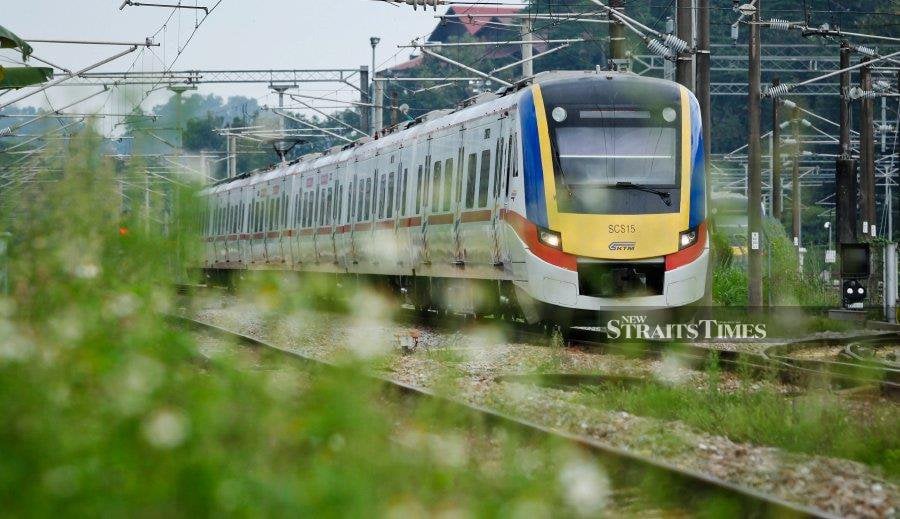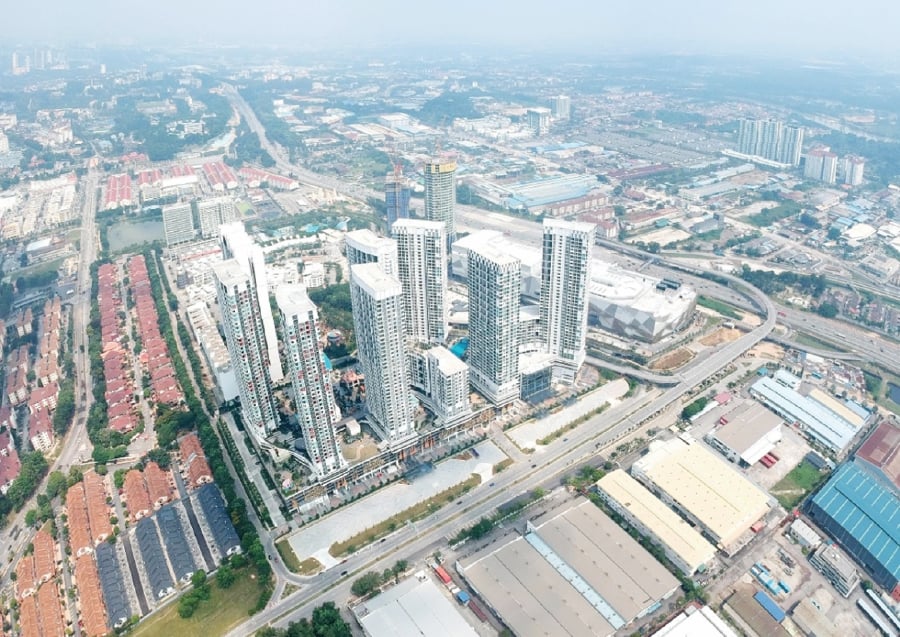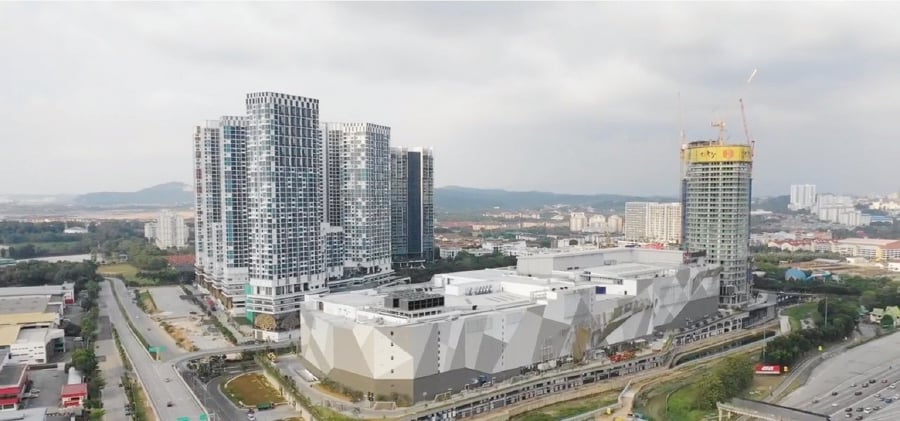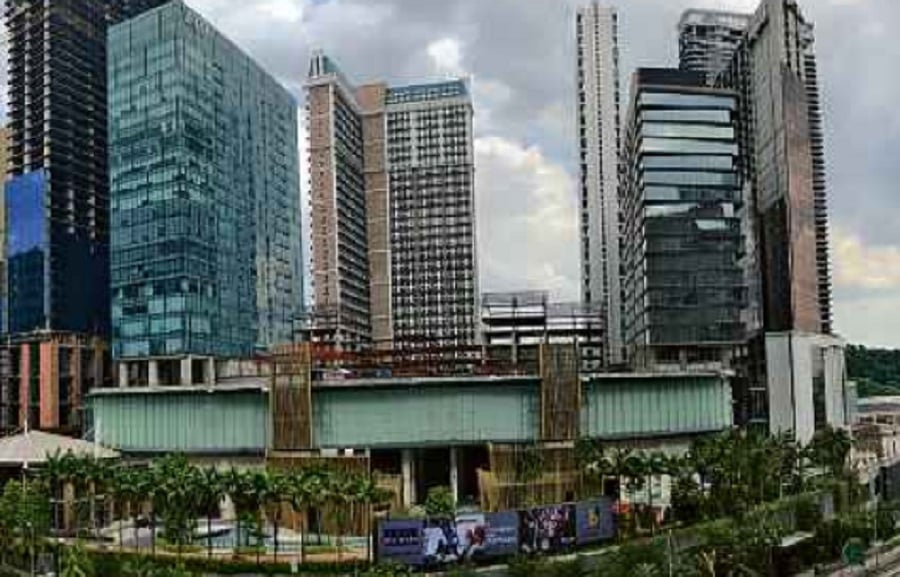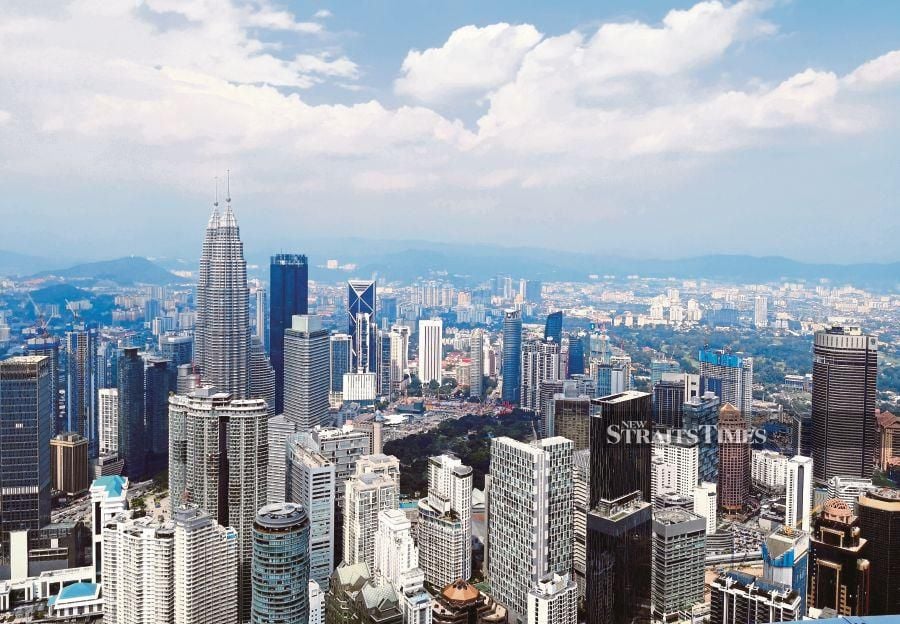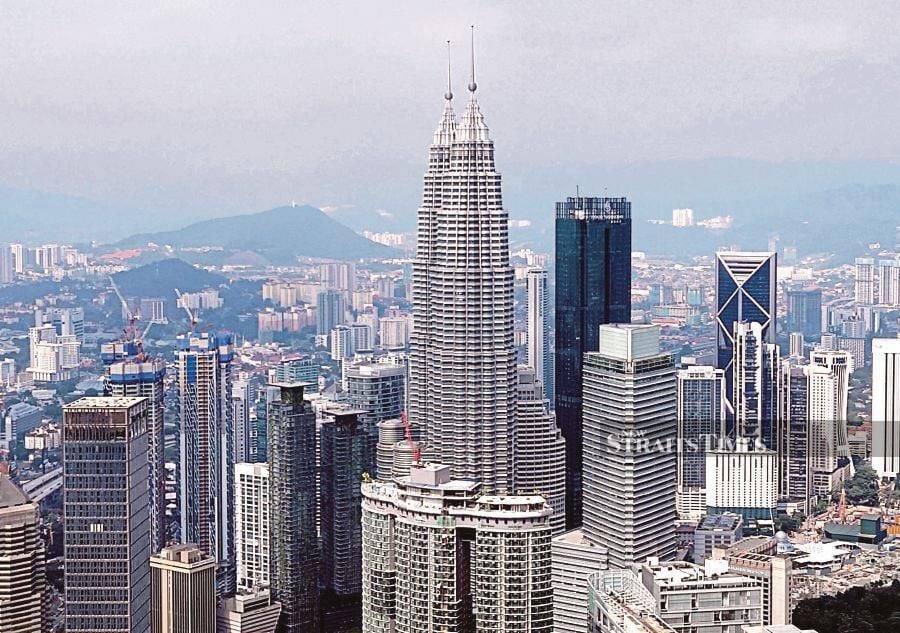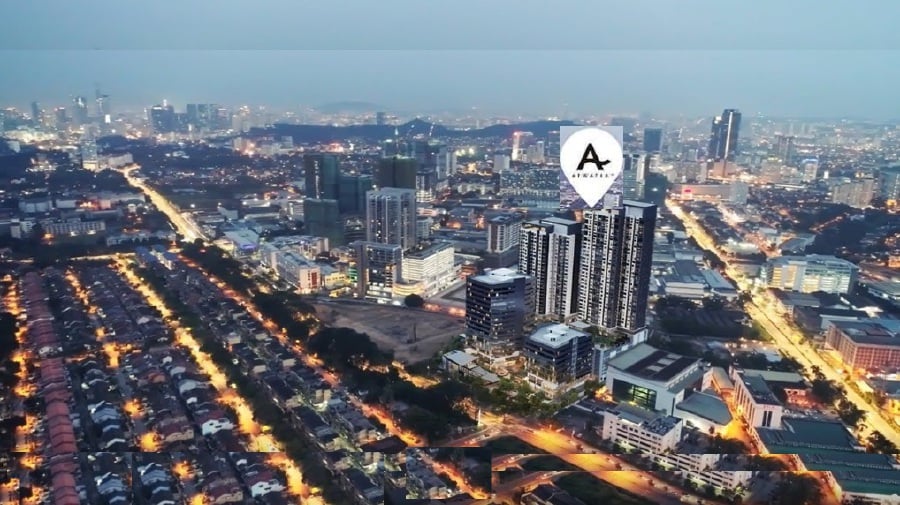
(File pix) An aerial view of section 13 showing the Atwater site.
SECTION 13 in Petaling Jaya, initially an industrial enclave, expanded in the 1960s to become a bustling area with commercial and residential development activities.
If you ask Petaling Jaya folks, this is where they want to live, work and play. Many will remember Section 13 for the famous “Rothmans Roundabout” at the intersection of Jalan Semangat and Jalan Harapan, which has been converted into a traffic-light intersection.
Drive through Section 13 and you will see Sin Chew Media, Dutch Lady Milk, Colgate-Palmolive, Robert Bosch, Konica Minolta, Daikin, Fuji Xerox, Panasonic, Nissan Tan Chong and Vitagen offices, to name a few. In the past, there were Aluminium Company of Malaysia, Malaysian Feedmill plant, Philips, Bayer and the old F&N Dairies factory.
The land on which these firms were sited had been sold to developers, except for the F&N factory which would be redeveloped by Fraser & Neave Holdings Bhd (F&N) and its joint-venture partner, Singapore-based Frasers Centrepoint Ltd.
F&N plans to undertake an integrated development called Fraser Square on the 5.1ha site. According to F&N’s 2014 annual report, Fraser Square would comprise three residential blocks, a retail mall with an adjoining hotel and boutique offices, an office building and a block of small office home office.
The development was supposed to kick-off in 2016 but F&N had said at that time it was reviewing the development.
Large area for redevelopment according to Petaling Jaya City Council (MBPJ), Section 13, which is served by three major roads— Jalan Universiti, Jalan Kemajuan and Jalan Semangat—covers an area of 101.96ha.
Several years ago, MBPJ came up with a Special Area Plan for Section 13 to facilitate the conversion of land use from industrial to mixed-use or limited commercial status.
MBPJ plans to convert 76.57ha (75.1 per cent of Section 13) of the industrial land for commercial use.
The permissible plot ratios are 3.25 to 3.75 for mixed-used developments and 2.75 to 3.00 for limited commercial development parcels, depending on the allowable development and land sizes.
This garnered a lot of interest from developers. They bought land and launched mixed-use
projects comprising serviced apartments, office towers, hotels and a hospital.
“Section 13 is surrounded by mature townships such as SEA Park, Paramount Garden, SS2, SS14, SS19 and SS17. People were looking for new areas to upgrade. They were also looking for a lifestyle
change,” said Paramount Property chief executive officer Beh Chun Chong.
Beh said Section 13 is one of the most centralised locations in Petaling Jaya with easy access to major roads.
Paramount bought 2ha of land fronting Jalan Universiti, where Philips Malaysia used to operate in 2008. Initially, the site was occupied by its KDU University College’s (KDUUC) School of Business and Law. The college moved to Paramount Corp Bhd’s flagship campus in Utropolis in Glenmarie,
Selangor, in January 2015.
“We took over the site in 2015 from KDU UC to develop Atwater, an integrated development with a gross development value (GDV) of almost RM800 million. We have completed earthworks and started construction. Atwater is on schedule to complete in 2022,” Beh told NST Property.
Early buyers One of the early buyers in Section 13 was Jaya33 Sdn Bhd. It bought land housing the
Malaysian Feedmill plant more than a decade ago to build several commercial blocks known as Jaya 33.
Jaya 33 was completed in 2011. In 2013, the asset was sold to Pelaburan Hartanah Bhd (PHB) for RM324 million, or about RM725 per sq ft.
What came up later was Plaza 33,a Grade A office building on 0.9ha land (which previously housed a
paint factory), and Jaya One on the former site of Aluminium Company of Malaysia.
Another firm which sold its land to developers was DKSH Group. It sold Lot 52 (2.4ha) to PJ Development Holdings Bhd for RM124.2 million, or RM480 per sq ft, in June 2013.
OSK Property Holdings Bhd is developing Ryan & Miho, with a GDV of RM595 million, on the land.
Ryan& Miho, which has up to 1,084 apartments, is also equipped with a 0.89ha podium facility.
Quill Group acquired DKSH’s Lot 7 (0.8ha) in Jalan Bersatu for RM360 per sq ft.
Other projects in Section 13 include Pacific Star and Pacific 63—a joint venture between JAKS Sdn Bhd, the contractor, and Island Circle Development (M) Sdn Bhd.
Pacific Star, with a GDV of RM900 million, consists of 14-and17-storey office buildings, three serviced apartment towers (25 to 34 storeys) and 33 retail units. It sits on the site previously occupied by Star Publications (M) Bhd in Jalan 13/6. Star sold the 2.4ha land to the joint venture for RM135 million in 2011.
Pacific 63 is a 21-storey office tower adjacent to Jaya One.
There is also PJ Midtown in Jalan Kemajuan that is being developed by Sime Darby Brunsfield and IOI Properties Group Bhd.
Symphony Life Bhd has a 21-storey office block on a 0.72 ha it acquired for RM33 million in November 2013.
Thriven Global Bhd is developing the RM317 million Lumi Section 13, a 42-storey residential tower with 310 serviced units, on the site of Mudajaya Group Bhd’s former corporate office.
If you ask Petaling Jaya folks, this is where they want to live, work and play. Many will remember Section 13 for the famous “Rothmans Roundabout” at the intersection of Jalan Semangat and Jalan Harapan, which has been converted into a traffic-light intersection.
Drive through Section 13 and you will see Sin Chew Media, Dutch Lady Milk, Colgate-Palmolive, Robert Bosch, Konica Minolta, Daikin, Fuji Xerox, Panasonic, Nissan Tan Chong and Vitagen offices, to name a few. In the past, there were Aluminium Company of Malaysia, Malaysian Feedmill plant, Philips, Bayer and the old F&N Dairies factory.
The land on which these firms were sited had been sold to developers, except for the F&N factory which would be redeveloped by Fraser & Neave Holdings Bhd (F&N) and its joint-venture partner, Singapore-based Frasers Centrepoint Ltd.
F&N plans to undertake an integrated development called Fraser Square on the 5.1ha site. According to F&N’s 2014 annual report, Fraser Square would comprise three residential blocks, a retail mall with an adjoining hotel and boutique offices, an office building and a block of small office home office.
The development was supposed to kick-off in 2016 but F&N had said at that time it was reviewing the development.
Large area for redevelopment according to Petaling Jaya City Council (MBPJ), Section 13, which is served by three major roads— Jalan Universiti, Jalan Kemajuan and Jalan Semangat—covers an area of 101.96ha.
Several years ago, MBPJ came up with a Special Area Plan for Section 13 to facilitate the conversion of land use from industrial to mixed-use or limited commercial status.
MBPJ plans to convert 76.57ha (75.1 per cent of Section 13) of the industrial land for commercial use.
The permissible plot ratios are 3.25 to 3.75 for mixed-used developments and 2.75 to 3.00 for limited commercial development parcels, depending on the allowable development and land sizes.
This garnered a lot of interest from developers. They bought land and launched mixed-use
projects comprising serviced apartments, office towers, hotels and a hospital.
“Section 13 is surrounded by mature townships such as SEA Park, Paramount Garden, SS2, SS14, SS19 and SS17. People were looking for new areas to upgrade. They were also looking for a lifestyle
change,” said Paramount Property chief executive officer Beh Chun Chong.
Beh said Section 13 is one of the most centralised locations in Petaling Jaya with easy access to major roads.
Paramount bought 2ha of land fronting Jalan Universiti, where Philips Malaysia used to operate in 2008. Initially, the site was occupied by its KDU University College’s (KDUUC) School of Business and Law. The college moved to Paramount Corp Bhd’s flagship campus in Utropolis in Glenmarie,
Selangor, in January 2015.
“We took over the site in 2015 from KDU UC to develop Atwater, an integrated development with a gross development value (GDV) of almost RM800 million. We have completed earthworks and started construction. Atwater is on schedule to complete in 2022,” Beh told NST Property.
Early buyers One of the early buyers in Section 13 was Jaya33 Sdn Bhd. It bought land housing the
Malaysian Feedmill plant more than a decade ago to build several commercial blocks known as Jaya 33.
Jaya 33 was completed in 2011. In 2013, the asset was sold to Pelaburan Hartanah Bhd (PHB) for RM324 million, or about RM725 per sq ft.
What came up later was Plaza 33,a Grade A office building on 0.9ha land (which previously housed a
paint factory), and Jaya One on the former site of Aluminium Company of Malaysia.
Another firm which sold its land to developers was DKSH Group. It sold Lot 52 (2.4ha) to PJ Development Holdings Bhd for RM124.2 million, or RM480 per sq ft, in June 2013.
OSK Property Holdings Bhd is developing Ryan & Miho, with a GDV of RM595 million, on the land.
Ryan& Miho, which has up to 1,084 apartments, is also equipped with a 0.89ha podium facility.
Quill Group acquired DKSH’s Lot 7 (0.8ha) in Jalan Bersatu for RM360 per sq ft.
Other projects in Section 13 include Pacific Star and Pacific 63—a joint venture between JAKS Sdn Bhd, the contractor, and Island Circle Development (M) Sdn Bhd.
Pacific Star, with a GDV of RM900 million, consists of 14-and17-storey office buildings, three serviced apartment towers (25 to 34 storeys) and 33 retail units. It sits on the site previously occupied by Star Publications (M) Bhd in Jalan 13/6. Star sold the 2.4ha land to the joint venture for RM135 million in 2011.
Pacific 63 is a 21-storey office tower adjacent to Jaya One.
There is also PJ Midtown in Jalan Kemajuan that is being developed by Sime Darby Brunsfield and IOI Properties Group Bhd.
Symphony Life Bhd has a 21-storey office block on a 0.72 ha it acquired for RM33 million in November 2013.
Thriven Global Bhd is developing the RM317 million Lumi Section 13, a 42-storey residential tower with 310 serviced units, on the site of Mudajaya Group Bhd’s former corporate office.
